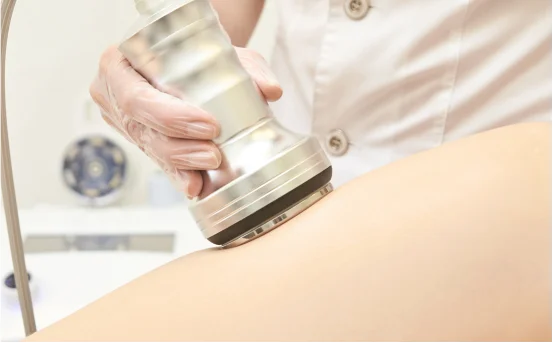Treatment of thigh lift surgery, also known as thighplasty, is a cosmetic procedure designed to reshape and smooth the upper legs for a firmer, more youthful contour. Loose, sagging skin on the thighs can be a result of aging, dramatic weight loss, or genetics. While exercise and healthy living help tone the muscles, they often don’t address excess skin and fat.
Sagging or loose skin on the thighs can be a frustrating aesthetic concern, especially after major weight loss, aging, or genetic factors. While regular exercise and a healthy diet help in toning the muscles and reducing fat, they often fail to address excess, stretched skin that has lost its elasticity. This can lead to discomfort, skin irritation, and self-consciousness about wearing shorts, swimwear, or fitted clothing.
What is Thigh Lift Surgery?
Thigh lift surgery is a body contouring procedure that removes excess skin and fat from the inner or outer thighs. It helps improve skin elasticity and reshape the thighs, making them more proportionate with the rest of the body. This surgery is especially beneficial for individuals who have lost a significant amount of weight or are experiencing skin laxity due to aging.
Who is a Good Candidate for a Thigh Lift?
Thighplasty is suitable for individuals who :-
-
Have loose or sagging skin on their inner or outer thighs
-
Maintain a stable weight and are not planning major weight changes
-
Are in good general health with no major medical conditions
-
Do not smoke or are willing to quit before and after surgery
-
Have realistic expectations about the results
People who undergo bariatric surgery or have lost weight through diet and exercise are often ideal candidates for a thigh lift.
Types of Thigh Lift Surgery
There are several types of thigh lift procedures depending on the target area and the amount of correction needed :-
- Inner Thigh Lift :- Also called a medial thigh lift, this targets the inner thighs. An incision is made in the groin area, allowing the surgeon to remove excess skin and tighten the underlying tissues.
- Outer Thigh Lift :- This procedure addresses the outer thighs and hips. It involves larger incisions that may extend around the hip, often combined with a lower body lift.
- Mini Thigh Lift :- Ideal for those with minimal sagging, this version involves a smaller incision and a shorter recovery time. It primarily focuses on the upper part of the inner thigh.
- Vertical Thigh Lift :- This technique is used when there is significant sagging in the thighs. It involves a vertical incision from the groin down to the knee.
How is Thigh Lift Surgery Performed?
Pre-Surgery Preparation
Before surgery, the patient undergoes a detailed consultation and medical evaluation. The surgeon may recommend :-
-
Blood tests
-
Medication adjustments
-
Temporary discontinuation of smoking
-
Stopping aspirin or other blood-thinning medications
The Procedure
Thigh lift surgery is typically performed under general anesthesia and takes 2 to 3 hours, depending on the extent of correction.
-
Marking the incision lines based on the chosen technique
-
Making the incisions and removing excess skin and fat
-
Tightening the underlying tissues and supporting structures
-
Closing the incisions with sutures or skin adhesives
-
Applying dressings and sometimes temporary drain tubes
Recovery After Thigh Lift Surgery
Initial Recovery (Week 1–2)
-
Expect bruising, swelling, and mild discomfort
-
Pain can be managed with prescribed medications
-
Compression garments are worn to reduce swelling and support healing
-
Most patients can return to light activities in 10–14 days
Long-Term Recovery (Week 3–6+)
-
Avoid strenuous activities and heavy lifting for at least 4–6 weeks
-
Gradually resume normal routines as advised by your surgeon
-
Final results may become visible within 3 to 6 months once swelling subsides
Following all post-operative care instructions is crucial for a smooth recovery and optimal results.
Benefits of Thigh Lift Surgery
-
Removes excess, sagging skin
-
Improves thigh contours and firmness
-
Enhances self-confidence and body image
-
Helps eliminate chafing or rashes caused by overlapping skin
-
Results are long-lasting if a stable weight is maintained
Potential Risks and Complications
Like all surgical procedures, thigh lift surgery carries some risks, including :-
-
Scarring (though they typically fade over time)
-
Infection
-
Bleeding or fluid accumulation (seroma)
-
Poor wound healing
-
Asymmetry
-
Temporary or permanent numbness in the thigh area
Choosing a qualified plastic surgeon significantly reduces the chances of complications.
How to Choose the Right Surgeon?
When considering thigh lift surgery, choosing a qualified and experienced cosmetic surgeon is essential. Here’s what to look for :-
-
Board certification in plastic or cosmetic surgery
-
Years of experience with body contouring procedures
-
Before-and-after photos of previous patients
-
Transparent consultation and discussion of risks
-
Good reviews and testimonials from patients
Always schedule a consultation to understand if the surgeon’s approach aligns with your expectations.
Conclusion
Thigh lift surgery is an effective way to regain a firm, contoured appearance in your legs, especially after major weight loss or with age-related sagging. From enhancing body image to improving comfort and confidence, this procedure can offer transformative results. If you’re considering a thighplasty, consult with a trusted cosmetic surgeon to determine the most suitable approach for your body goals.






















